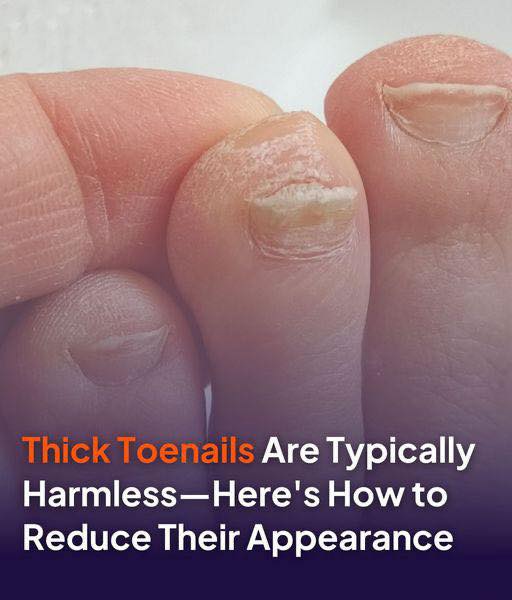When people think about maintaining good health, they may not consider their feet until they remove a sock and notice unusually thick toenails. Some people might dismiss this symptom, especially if they don’t care about the appearance. After all, how many people actually see their feet? However, thickened toenails may be a sign of a health issue and should not be ignored.
Causes of thick toenails

“Feet are more likely to be sweaty and damp, which provides a better environment for the fungi, yeasts, and molds that are naturally present on your skin to flourish,” says Dr. Abigail Waldman, a dermatologist at Harvard-affiliated Brigham and Women’s Hospital. People can contract fungi after a pedicure at a nail salon or after walking barefoot around swimming pools and locker rooms. The infection can begin on the skin of the feet or toes and cause the athlete’s foot to continue to the nails.
Toenails can thicken for many reasons, including injuries, fungal infections, and certain diseases. Healthcare providers will examine the toes to determine the cause in order to prescribe the right treatment. Common causes include:
- Onychomycosis – a common type of toenail fungus. The body tries to remove the fungus by starting to grow a new nail beneath it.
- Onychauxis – also called onychogryphosis. This condition can occur due to injuries and medical issues like diabetes and psoriasis. Its symptoms can include thickened nails, yellowing or browning nails, and abnormal toenail growth and/or curling.
- Onycholysis – when the nail plate separates from the nail bed. That can happen after a nail injury, allergic reaction, psoriasis, over-filing of the nail, and other conditions.
Symptoms

Although different causes create different symptoms, there are more signs—other than a thickened toenail—that can indicate a medical problem. Infected toenails can become:
- Scaly or chalky-looking
- Split or crumbled
- Lifted away from the nail bed
- Give off a bad smell
- Change to a yellow, green, or brown color
- Have debris underneath them
Complications

Although thick toenails are typically just an eyesore, they can lead to more serious health issues if left untreated. This includes the loss of the nail, permanent tissue damage in the toes, infection spreading to bones, cellulitis, and sepsis.
Treating thickened toenails

Nail infections are harder to treat than skin infections because it’s more difficult for medications and cream to penetrate through nail tissue. That being said, there are some home remedies that may help solve the problem. For instance, you can try soaking the nails before applying anti-fungal cream. Use a combination of one part apple cider or white vinegar to three parts warm water and soak for 10 to 40 minutes, the longer the better. Then dry the area well before applying the cream.
There are many over-the-counter products that can treat athlete’s foot, but you can also apply 100% tea tree oil or Vicks VapoRub onto the affected nails. Medicinal creams that can help mild infections include amorolfine, ciclopirox, and efinaconazole. More serious infections may need to be treated with oral medications like fluconazole, griseofulvin, itraconazole, and terbinafine. These pills are typically taken for three months.
Alternatively, there is laser therapy, which works by penetrating and breaking down nail tissue. There are different kinds of laser treatment, so speak to your doctor about the best option for you. You may also need to see a dermatologist to entirely remove the affected toenails.
Remember, it can take months or even a year for a healthy toenail to grow back. In the meantime, be consistent with the treatment your doctor has prescribed. And maintain good foot hygiene. For instance, use two sets of clippers to prevent any spreading; one for clipping infected nails and one for healthy nails.
Risk factors

Anyone can get thickened toenails but certain situations can increase the risk. Such as:
- Poor foot hygiene habits
- Poor trimming of toenails
- Wearing ill-fitted shoes
- Using public pools and showers
- Foot injuries that affect the toenail
- Athlete’s foot
- Frequent pedicures
- Smoking tobacco
- Undergoing radiation therapy or chemotherapy
- Taking medications that decrease the effectiveness of the immune system
- Medical conditions that affect the immune system or lead to poor circulation
Prevention tips

With those risk factors in mind, protect your feet from infections with the following strategies:
- Sterilize nail clippers with alcohol if you share them with others
- Trim the nails often
- Change socks regularly
- Regularly disinfect socks and shoes
- Protect your feet in public showers and locker rooms
- Promptly treat athlete’s foot
- Keep your feet dry
- See a professional to remove buildup from under your toes instead of doing it yourself
